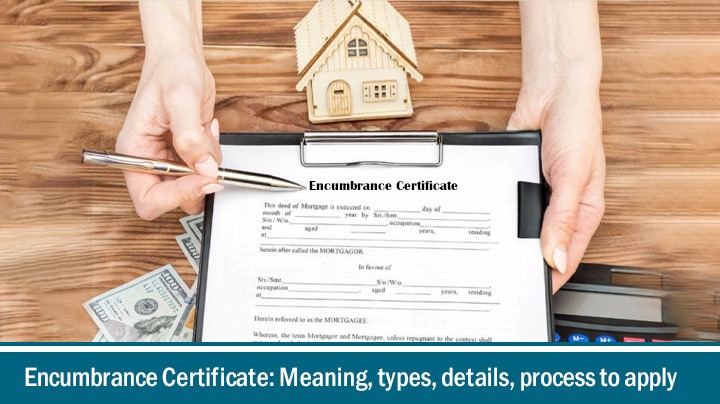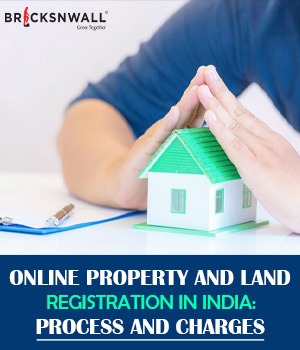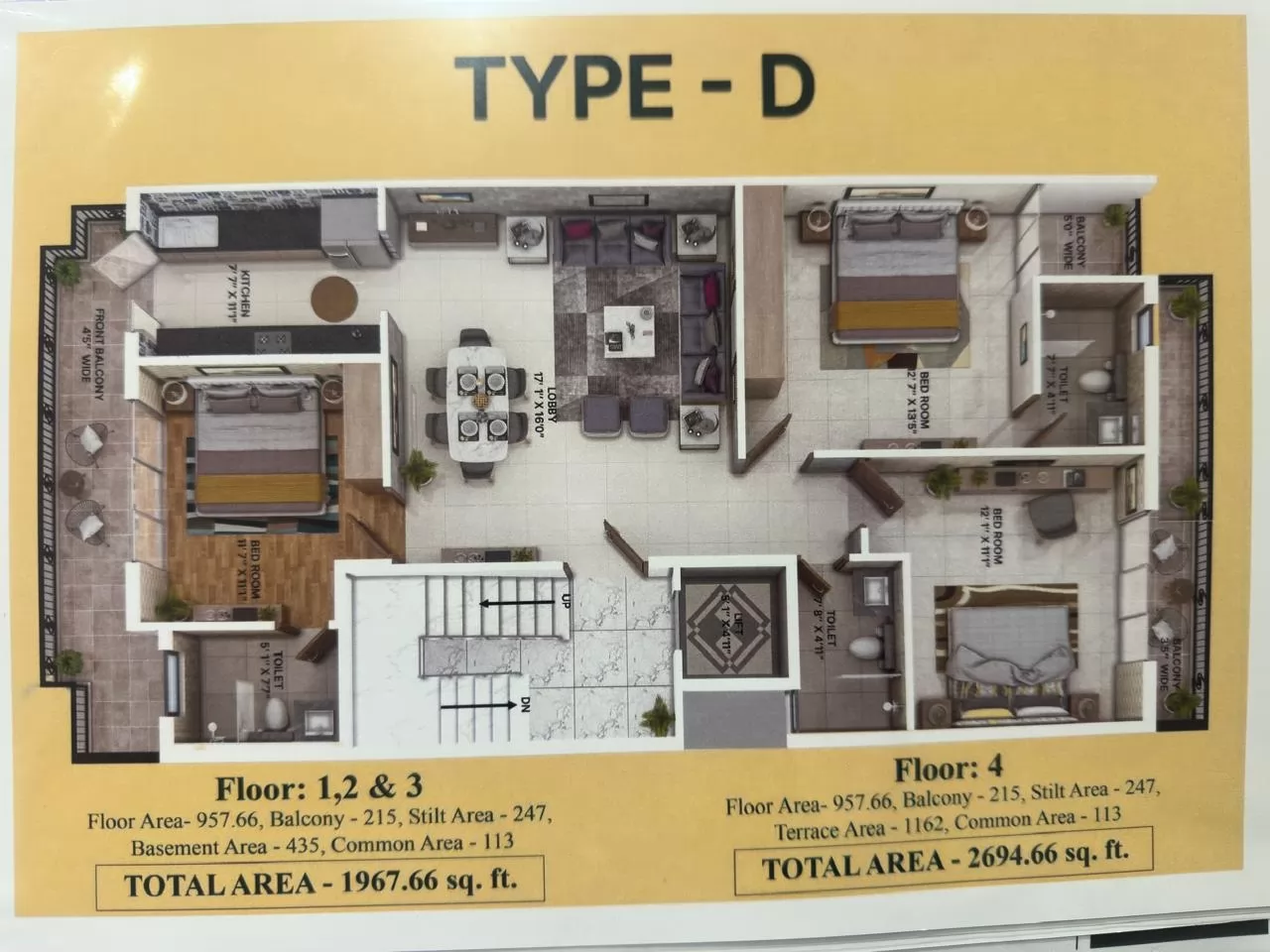Encumbrance Certificate: Meaning, types, details, process to apply
Bricksnwall Trusted Experts

A buyer needs to verify the encumbrance certificate (EC) to ensure they are purchasing a property free of any debt or legal issues. Now that several Indian states have launched online virtual facilities for checking EC, it's very simple to obtain this document. This blog will cover every facet of this legal document, giving investors and buyers a clear understanding of the property title and related legal and financial issues. Will also go over how to get an online EC certificate.
An encumbrance certificate: what is it?
A legal document known as an encumbrance certificate certifies whether or not a piece of property is free from debt or other obligations. One example of a financial encumbrance is a property on which the owner is currently making home loan payments. The specifics of this financial encumbrance are available to you if you request for an encumbrance certificate for this property. Similarly to this, the municipal authority will issue an encumbrance certificate outlining the responsibilities for a property that is involved in a legal dispute.
Why is a certificate of encumbrance significant?
The absence of any financial or legal obligations
on a specific piece of property is made clear by an encumbrance certificate.
For example, an encumbrance certificate might indicate whether the owner has
committed it to a bank. You may also determine whether you are working with a
legitimate seller and that the property is not in any financial or legal bind
by looking at an encumbrance certificate.
Through a precise statement of the property's legal
and financial status, an encumbrance certificate responds to the following
questions:
Is the owner pledging the property you are
purchasing to a bank?
Is the individual selling the property the true
owner?
How many people have owned the property since it
was built?
Is there no debt on the property?
Has the prior owner used the property as collateral
for a debt?
Has this property been purchased by someone else without the owner's knowledge?
What information does an encumbrance certificate
contain?
The sub-registrar's office issues encumbrance
certificates that contain all the information on a property, including its
owner, ownership transfers, mortgages, and other facts. A certificate of
encumbrance is created for a specified period of time. A list of all recorded
transactions pertaining to the property during the specified time frame is
provided by the EC. The following information may be included in these
transactions:
How many times throughout this time the property
was sold or purchased?
if, during this time, any loans were obtained
secured by the property.
Whether the property's debts were settled during
this time.
A record of all potential legal claims made during this time about the property.
Encumbrance certificate types and how to utilize
them for apartments
An encumbrance certificate is a necessary document
when purchasing a property to make sure you are dealing with a legitimate owner
and that there are no outstanding loans against the asset.
EC for mortgages
Before accepting your house loan application, banks
usually need the encumbrance certificate when you are taking out a loan to
purchase a property.
EC for the removal of PF
The EC is what your employer would request if you
took money out of your provident fund to purchase a home.
EC in case of mutation
After purchasing a property, the owner must use
property mutation to have the ownership transfer officially documented in the
government record.
EC for flat purchase
In order to show a document to a buyer while selling a property, the seller must apply for and obtain it from the government record.
An encumbrance certificate is issued by whom?
The encumbrance certificate is issued by the
sub-registrar whose jurisdiction includes the property. This is the office
where both the present and prior owners registered the property at the time of
purchase.
Documents required for the encumbrance certificate
application
To apply for an EC, a candidate must submit the
following paperwork:
Proof of address: ration card, voter ID, Aadhaar,
driver's license, etc.
Identity cards include voter ID, Aadhaar, PAN,
ration cards, and driver's license.
Details about the property
4. The sale deed copy
5. The application's goal
6. The EC mandate timeframe
7. If necessary, a copy of the power of attorney
Forms for encumbrance certificates
Two types of encumbrance certificates exist:
Certificates of Encumbrance Form 15
The sub-registrar's office issues an encumbrance certificate on Form 15 if a property has any encumbrances during the time for which the applicant has requested a certificate. All information on the inheritance, sale, purchase, lease, mortgage, gifting, relinquishment, and partition of the subject property is usually included in Form 15.
Form 16 encumbrance certificates
The sub-registrar's office issues a nil-encumbrance
certificate on Form 16 if a property has not recorded any encumbrances during
the time for which the applicant has requested a certificate.
Applications of EC in different modes
You may apply online or offline for an encumbrance certificate, depending on the state in which you reside.
How can I apply online for EC?
To obtain online encumbrance certifications, the
candidate must adhere to this detailed instruction. Please take note that this
service is only offered in a few states. Here, you will learn how to apply
online for EC in Telangana for a better understanding.
Step 1: Visit the
Meeseva portal webpage.
Step 2: Select the
Government Forms tab, which is the third one to show up at the top of the page.
Step 3: Navigate through
the page that opens. The Encumbrance Certificate Application form is located
under the Stamps and Registration heading. Fill out the essential information
by downloading the form. Enclose the required paperwork with the form.
Step 4: Locate the Meeseva center that is closest to you, and apply there, along with the necessary payment.https://apdept.meeseva.gov.in/Imeeseva2/IMeesevaHome.aspx
Step 5: An
acknowledgment slip will be sent to you following the submission.
Step 6: The
sub-registrar's office will receive your application after it has been verified
and is in charge of physically inspecting the property before issuing an
encumbrance certificate.
Step 7: You can monitor
the status of your application on this portal in addition to receiving
information by SMS from the Meeseva portal.
Step 8: The sub-registrar's office issues the EC within six business days.
How can I apply offline for an encumbrance
certificate?
The applicant must go to the sub-registrar's office
where the property in question is registered if an EC is not given
electronically in the state in question.
On a sheet of plain paper, draft an application
that makes explicit the details you are looking for.
Send in the application and a completed Form 22.
To obtain the EC, you must submit your application and pay a small fee. The cost would change based on how long the EC is requested.
Encumbrance certificate fee
An applicant need simply pay a small fee (which
varies by state and might be anywhere from Rs 200 to Rs 500) in order to
receive an EC. Nevertheless, fees may change based on the time frame you are
looking for.
Encumbrance
certificate fees in some states
|
Delhi |
Rs 200 |
|
Andhra Pradesh |
Rs 300 |
|
Telangana |
Rs 200-500 |
|
Tamil Nadu |
Rs 1-5 |
|
Kerala |
Rs 10 |
|
Maharashtra |
Rs 200-500 |
Payment methods for encumbrance certificates
You have a few options for paying when you apply online for an encumbrance certificate. These consist of using e-wallets, internet banking, debit or credit cards, NEFT, and RGTS, among other methods.
What is the duration required to obtain an
encumbrance certificate?
An EC can be obtained offline in 15 to 30 days, however in areas where the certificate is granted online, the document is issued in about 6 to 7 days. For example, getting an EC offline in Delhi takes 21 days.
How long is it possible to obtain an encumbrance
certificate?
A certificate of encumbrance may be obtained for a
duration ranging from 12 to 30 years.
Why is it crucial to obtain an encumbrance
certificate?
One of the many documents that prove a property is or is not free from financial or legal problems is the encumbrance certificate. Before deciding to buy a home, buyers must require the sellers to produce this paperwork.







